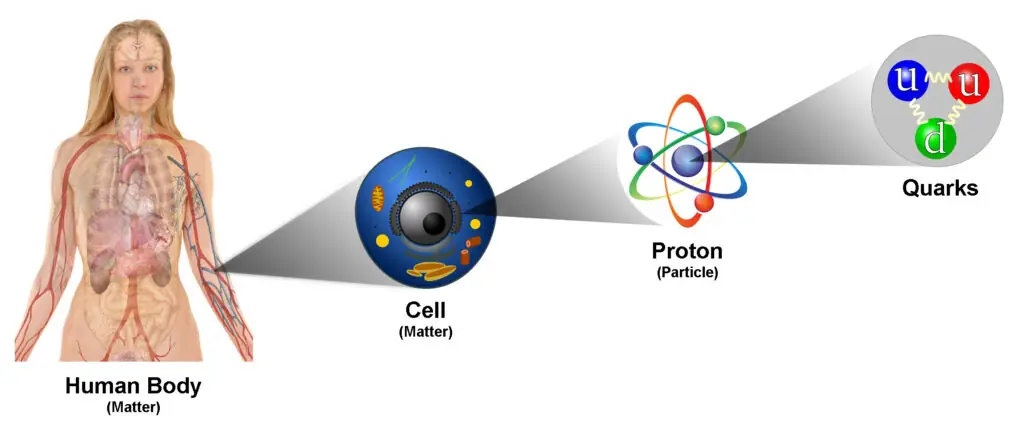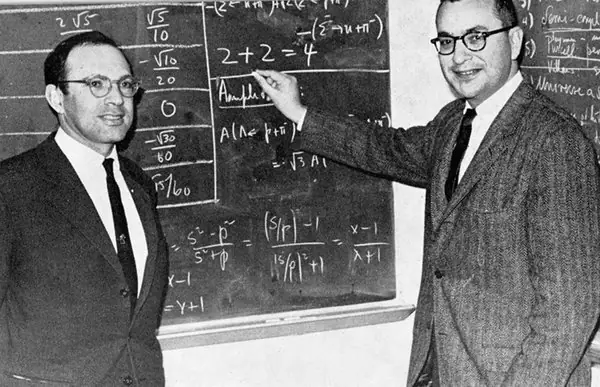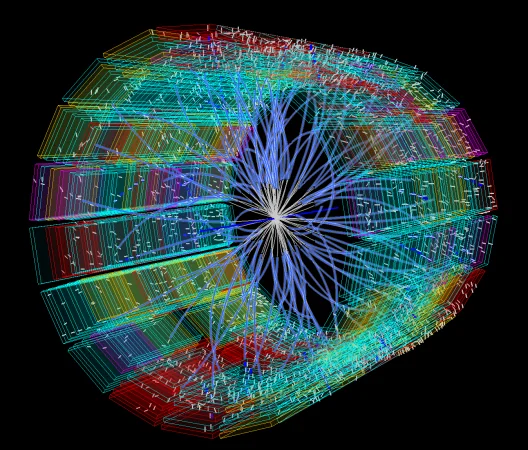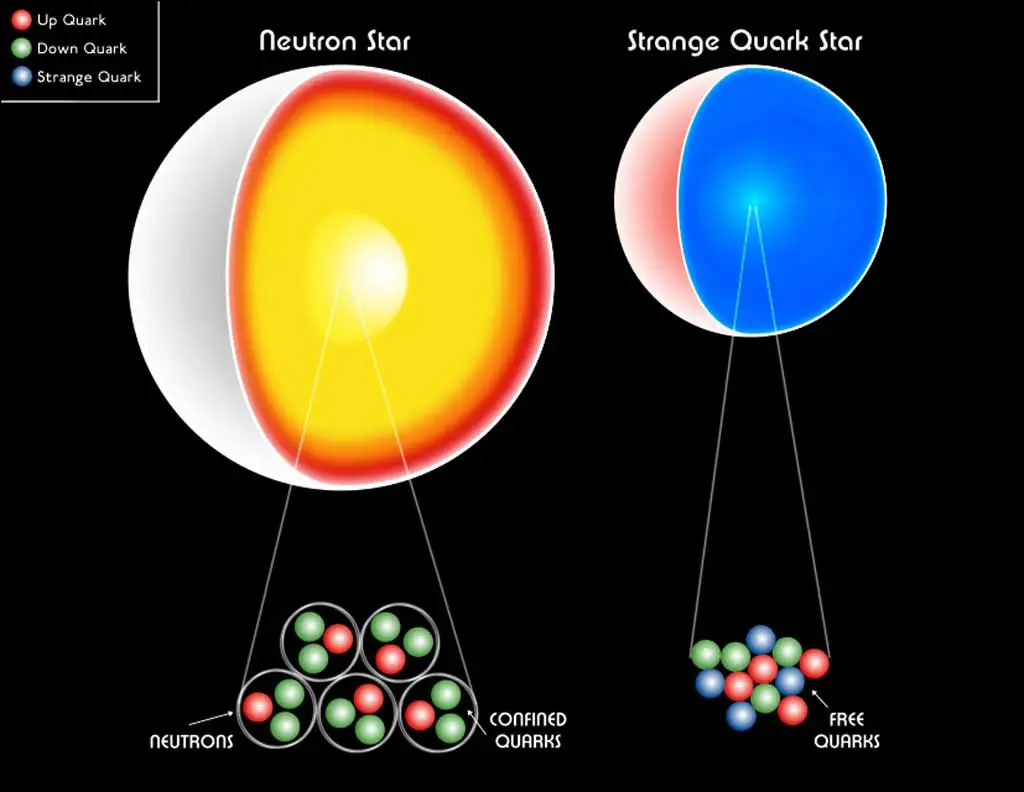Quarks are the tiny, elusive particles that have captivated the minds of physicists and students alike. But what exactly are these fundamental building blocks of matter, and why are they so important in the grand scheme of things? Let’s dive into the fascinating world of quarks and quantum physics to unravel the mysteries of the universe.

✅ AI Essay Writer ✅ AI Detector ✅ Plagchecker ✅ Paraphraser
✅ Summarizer ✅ Citation Generator
Quarks: What are They?
Quarks are fundamental particles that play a crucial role in the structure of matter in the universe. They are the building blocks of protons and neutrons, which are the components of atomic nuclei. Each proton and neutron is made up of three quarks, held together by a strong nuclear force. As they are elementary, this means that they are not made of any smaller particles. According to our current understanding of particle physics, as described by the Standard Model (which we will talk about later), they cannot be broken down into simpler components.
One of the most distinctive properties of quarks is their “color charge.” Unlike the electric charge, color charge comes in three types: red, green, and blue. This nomenclature is purely symbolic and has no relation to the colors we see in everyday life. The color charge is responsible for the strong interaction between quarks, which is much stronger than the electromagnetic force that binds electrons to nuclei in atoms.

The force that holds quarks together is mediated by particles called gluons. Gluons are the carriers of the strong nuclear force, and they act as the “glue” that keeps quarks bound together. They can be thought of as the analogs of photons in electromagnetism but for the strong force. Gluons themselves carry color charge, which allows them to interact with quarks and other gluons, creating a complex interplay of forces that keeps quarks tightly bound.
Quarks are never found in isolation in nature due to a phenomenon known as “color confinement.” This means that quarks are always found in combination with other quarks, forming composite particles. These composite particles fall into two main categories: baryons and mesons. Baryons, such as protons and neutrons, are made up of three quarks. Mesons, on the other hand, are made up of a quark and an antiquark pair.
The Discovery of Quarks
The discovery of quarks marked a pivotal moment in the history of particle physics, revolutionizing our understanding of the fundamental structure of matter. The journey to uncovering the existence of quarks began in the early 1960s when physicists Murray Gell-Mann and George Zweig independently proposed the concept of these subatomic particles. At the time, their theories were met with skepticism, as quarks were considered abstract, mathematical constructs rather than tangible entities.
Murray Gell-Mann, who is often credited with the discovery of quarks, named these particles after a line from James Joyce’s novel “Finnegans Wake”: “Three quarks for Muster Mark!” He introduced the concept of quarks as a way to explain the patterns observed in the hadrons, the family of particles that includes protons and neutrons.

In the following years, a series of groundbreaking experiments provided indirect evidence for the existence of quarks. One of the most significant was the deep inelastic scattering experiments conducted at the Stanford Linear Accelerator Center (SLAC) in the late 1960s. These experiments involved bombarding protons with high-energy electrons and observing how the electrons scattered off the protons. The results suggested that protons were not indivisible particles but were instead composed of smaller, point-like constituents, which were later identified as quarks.
Further experimental evidence for quarks came from the discovery of new particles in particle accelerators. For example, the discovery of the J/ψ particle in 1974, which is composed of a charm quark and its antiquark, provided strong support for the quark model. The subsequent discoveries of the bottom quark in 1977 and the top quark in 1995 completed the picture of the six quark flavors that we know today.
The confirmation of the existence of quarks was a major triumph for the Standard Model of particle physics, which describes the behavior of all known elementary particles and their interactions. The quark model has since been further validated by numerous experiments, and quarks are now considered one of the fundamental building blocks of matter, along with leptons and gauge bosons.
Quarks in Quantum Physics
In quantum physics, quarks hold a forefront position. They are the cornerstone of the Standard Model, the comprehensive theory that serves as the backbone of our understanding of the universe’s most fundamental particles and forces. This model is a triumph of scientific achievement, unifying three of the four fundamental forces of nature: the electromagnetic force, the weak nuclear force, and the strong nuclear force, with quarks being pivotal in the latter.
The strong nuclear force, governed by the theory of quantum chromodynamics (QCD), is what keeps quarks tightly bound together. This force is incredibly strong, far surpassing the electromagnetic force that holds electrons in orbit around atomic nuclei. In fact, it’s this force that binds quarks to form protons and neutrons, the building blocks of atomic nuclei. Without the strong force, and without quarks, the universe as we know it simply wouldn’t exist.
But quarks are more than just the glue that holds nuclei together. They’re also key players in the interactions between particles. For example, when protons and neutrons are packed tightly together in an atomic nucleus, it’s the quarks within them that are interacting, mediated by the exchange of particles called gluons. These interactions are what give protons and neutrons their properties and, by extension, determine the properties of the atoms they form.
Moreover, quarks are central to our understanding of the universe’s most extreme environments. In the cores of neutron stars, where matter is compressed to unimaginable densities, quarks may be squeezed out of protons and neutrons to form a quark-gluon plasma, a state of matter that existed in the universe’s first moments. Understanding this plasma and the behavior of quarks under these conditions can provide insights into the early universe and the fundamental laws of nature.
Types of Quarks
In the subatomic world, quarks come in six distinct “flavors,” each with its own set of unique characteristics. These flavors are up, down, charm, strange, top, and bottom.

- Up Quark
This is the lightest of all quark flavors, with an electric charge of +2/3. Up quarks are a fundamental component of protons and neutrons, with protons containing two up quarks and one down quark, and neutrons containing one up quark and two down quarks. - Down Quark
Slightly heavier than the up quark, the down quark has an electric charge of -1/3. It pairs with the up quark to form the nucleons (protons and neutrons) that make up the nuclei of atoms. - Charm Quark
Discovered in the early 1970s, the charm quark is much heavier than the up and down quarks and has an electric charge of +2/3. It plays a role in the formation of charmed mesons and baryons, which are particles that are studied in high-energy physics experiments. - Strange Quark
With a charge of -1/3, the strange quark is heavier than the up and down quarks but lighter than the charm quark. It is involved in the formation of strange particles, such as kaons and hyperons, which were first observed in cosmic rays and particle accelerator experiments. - Top Quark
Also known as the truth quark, the top quark is the heaviest of all quarks, with a mass similar to that of an entire gold atom. It has a charge of +2/3 and is very unstable, decaying almost immediately after being produced in high-energy particle collisions. - Bottom Quark
Also known as the beauty quark, the bottom quark has a charge of -1/3 and is lighter than the top quark but still much heavier than the up, down, strange, and charm quarks. It is a component of bottom mesons and baryons, which are studied to understand the weak force and CP violation, a phenomenon that helps explain the matter-antimatter asymmetry in the universe.
| Quark Flavor | Electric Charge | Mass |
|---|---|---|
| Up⬆️ | +2/3 | ~2.3 MeV/c^2 |
| Down⬇️ | -1/3 | ~4.8 MeV/c^2 |
| Charm🍀 | +2/3 | ~1.275 GeV/c^2 |
| Strange🧐 | -1/3 | ~95 MeV/c^2 |
| Top🔝 | +2/3 | ~173 GeV/c^2 |
| Bottom📉 | -1/3 | ~4.18 GeV/c^2 |
Where Quarks Can be Found
Quarks are the building blocks of the protons and neutrons that form the heart of every atom. But beyond the familiar confines of atomic nuclei, quarks can exhibit some truly extraordinary behaviors under extreme conditions.
One such exotic state is the quark-gluon plasma. Picture the early universe, just moments after the Big Bang, when temperatures were unimaginably high. In this hot, dense environment, quarks were not confined within protons and neutrons as they are today. Instead, they roamed freely in a soup of quarks and gluons, the particles responsible for the strong force that usually binds quarks together. This primordial state of matter, the quark-gluon plasma, is a glimpse into the conditions that existed at the very dawn of the universe.

Fast forward to the present, and scientists are recreating these extreme conditions right here on Earth. In particle accelerators like the Large Hadron Collider, heavy ions are smashed together at nearly the speed of light, generating temperatures over a trillion degrees Celsius. For a fleeting moment, a quark-gluon plasma forms, allowing researchers to study this ancient state of matter and unlock secrets about the universe’s infancy and the fundamental forces that govern the cosmos.
Now, let’s venture into the theory with quark stars. Imagine a neutron star, an incredibly dense remnant of a supernova explosion. If the density of a neutron star becomes even greater, some theories suggest that the neutrons might break down into their constituent quarks, forming a quark star. These hypothetical objects would be made entirely of quark matter, a state of matter even more extreme than that found in neutron stars. While quark stars remain a speculative concept, their potential existence opens up fascinating possibilities for understanding the behavior of matter under the most extreme conditions in the universe.

Conclusion
Quarks are the fundamental building blocks of matter, playing a crucial role in the structure of the atomic nucleus and the behavior of particles in the quantum realm. Their discovery and study have been central to the development of the Standard Model of particle physics, providing a deeper understanding of the universe’s fundamental forces and components. As research continues, the mysteries of quarks and their interactions promise to reveal even more about the nature of reality and the origins of the cosmos.
FAQ
Follow us on Reddit for more insights and updates.





Comments (0)
Welcome to A*Help comments!
We’re all about debate and discussion at A*Help.
We value the diverse opinions of users, so you may find points of view that you don’t agree with. And that’s cool. However, there are certain things we’re not OK with: attempts to manipulate our data in any way, for example, or the posting of discriminative, offensive, hateful, or disparaging material.